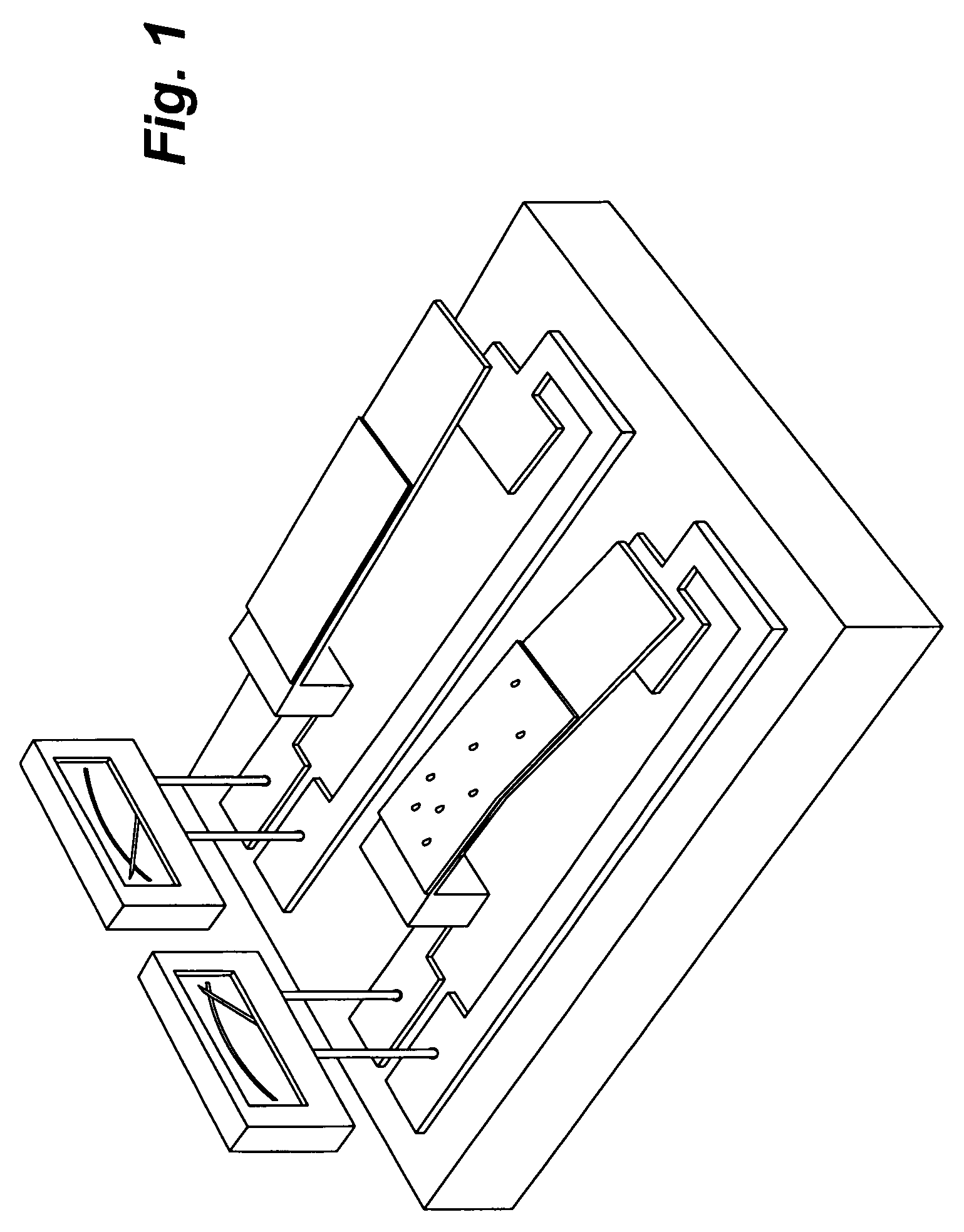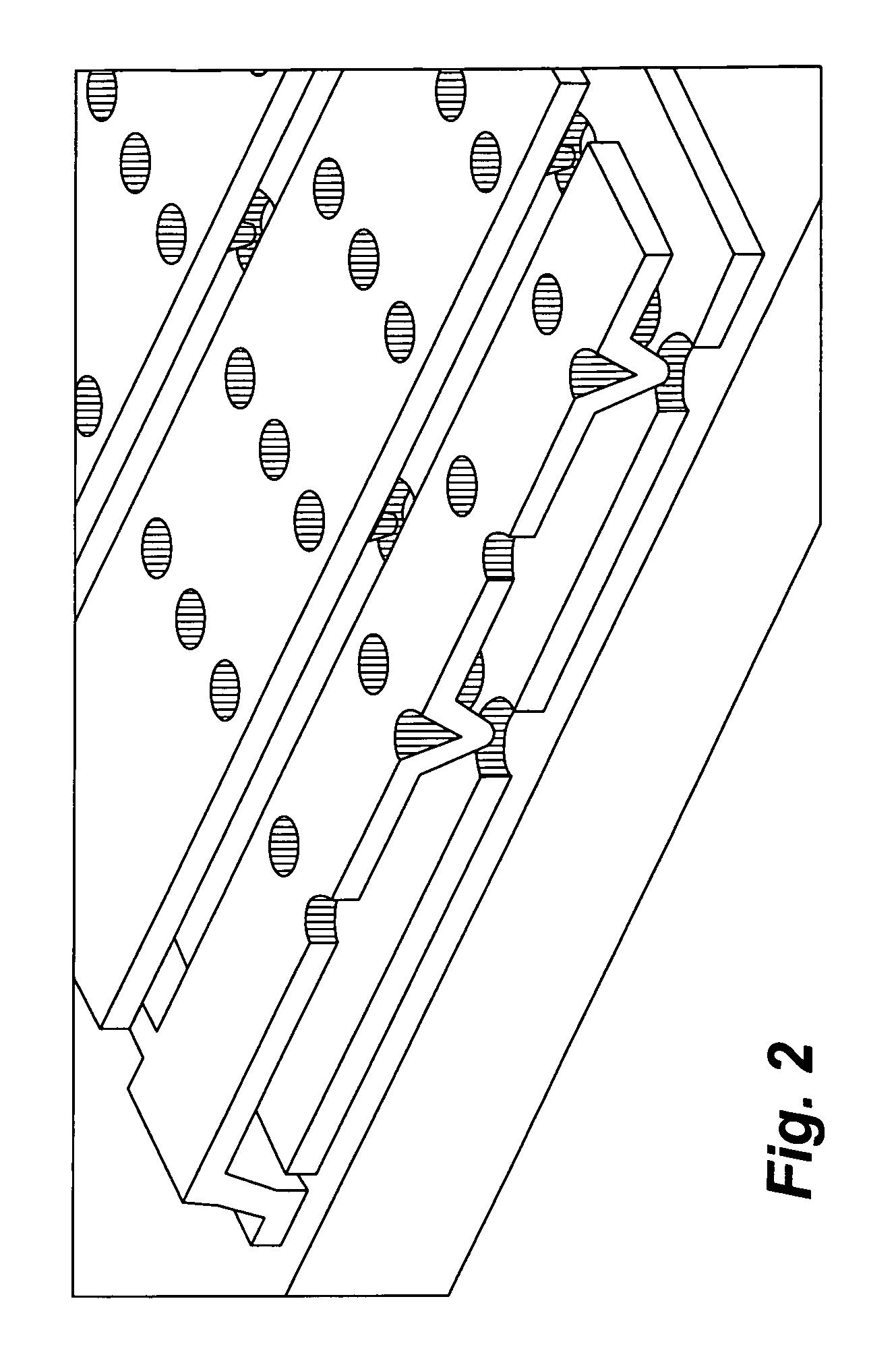Dense thin film-based chemical sensors and methods for making and using same
- Summary
- Abstract
- Description
- Claims
- Application Information
AI Technical Summary
Benefits of technology
Problems solved by technology
Method used
Image
Examples
embodiment
Preferred Embodiment
Hydrogen Sensor
[0034]Introduction
[0035]As discussed above, the detection of hydrogen has important implications in many fields, including the generation of “clean” energy. It is known that clean, unoxidized transition metal surfaces catalyze the breakdown of molecular hydrogen into atomic hydrogen, which can the diffuse into the metal. When a thin metal film, such as may be comprised of palladium or a palladium alloy, absorbs atomic hydrogen, the metal undergoes a number of physical changes that, if properly monitored, can indicate the ambient amount of hydrogen present in the particular environment. Examples of such changes include variation in electric properties, such as increasing resistance, decreasing refractive index, and increasing volume. These changes can serve as the basis for detecting hydrogen.
[0036]The expansion, i.e., increase in volume, of a thin transition metal film or alloy when it absorbs hydrogen is useful in the context of MEMS sensors. MEMS...
PUM
| Property | Measurement | Unit |
|---|---|---|
| thickness | aaaaa | aaaaa |
| thickness | aaaaa | aaaaa |
| thickness | aaaaa | aaaaa |
Abstract
Description
Claims
Application Information
 Login to View More
Login to View More - R&D
- Intellectual Property
- Life Sciences
- Materials
- Tech Scout
- Unparalleled Data Quality
- Higher Quality Content
- 60% Fewer Hallucinations
Browse by: Latest US Patents, China's latest patents, Technical Efficacy Thesaurus, Application Domain, Technology Topic, Popular Technical Reports.
© 2025 PatSnap. All rights reserved.Legal|Privacy policy|Modern Slavery Act Transparency Statement|Sitemap|About US| Contact US: help@patsnap.com



